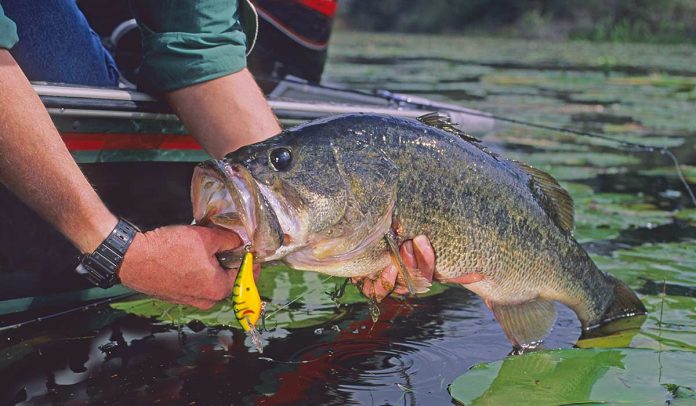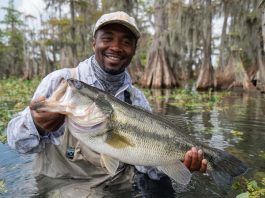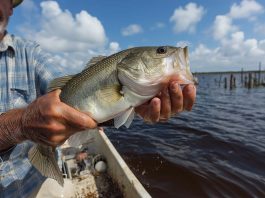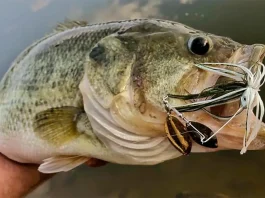Welcome to your exclusive Kissimmee Chain Fishing Report for early June 2025. The summer patterns are setting in, but recent weather has added an exciting twist to the action. Water levels are currently up across the chain, and with water temperatures firmly in the 80s, knowing where to be and when is the key to unlocking some incredible bites on famous lakes like Tohopekaliga, Kissimmee, and Hatchineha. This report will give you the inside track on exactly how to target largemouth bass and panfish right now.
Current Conditions: High Water and Hot Bites
Recent afternoon rains have pushed water levels slightly above their typical summer pool. This is a game-changer for anglers. The higher water inundates shoreline vegetation like Kissimmee grass and pencil reeds, creating new ambush points for predatory fish. Largemouth bass are taking full advantage of this new real estate, pushing into these freshly flooded areas to hunt for baitfish and crawfish that have been flushed out of their usual hiding spots.
Water temperatures are consistently ranging from 82-85°F across the chain. This means the early morning and late evening hours are your prime time. During the midday heat, fish are retreating to find more comfortable, oxygen-rich water. Look for them to pull out to deeper hydrilla edges, seek shade under thick matted vegetation, or move into deeper channels and creek mouths where there is a hint of current.
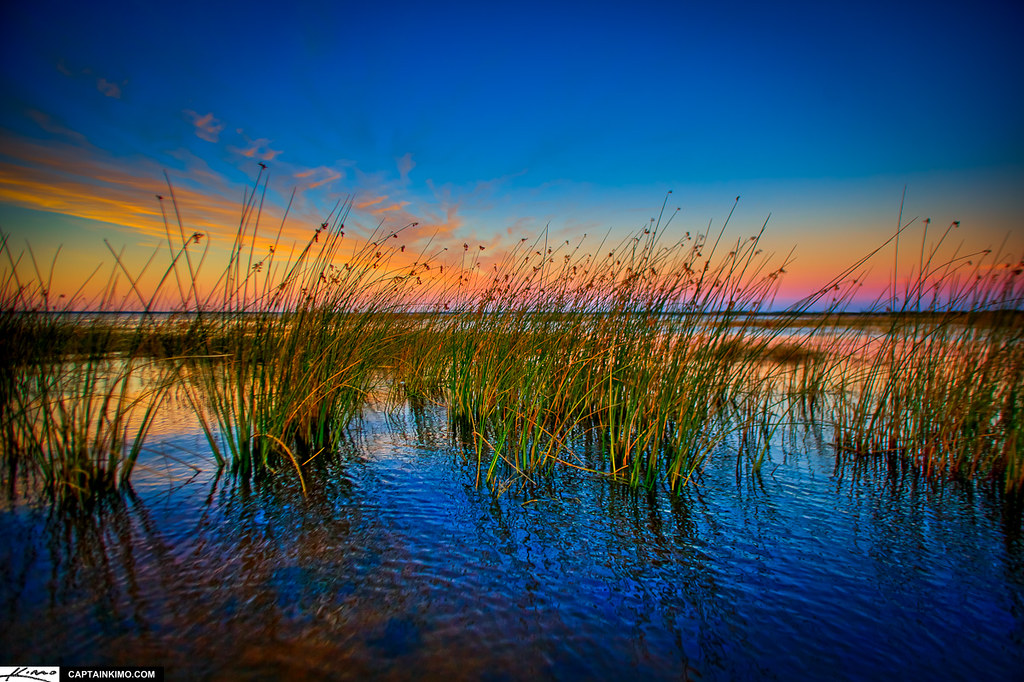
Breaking Down the Bass Bite: Your Kissimmee Chain Fishing Report
The largemouth bass bite has been strong for those who adapt to the conditions. The key is to follow a distinct two-part daily strategy: Go shallow early and late, and then transition to deeper water during the midday heat.
Early Morning & Late Evening Assault
This is topwater time. The first two hours of daylight and the last two hours before sunset have produced explosive strikes. Bass are aggressively feeding in and around submerged hydrilla beds in 3 to 6 feet of water.
Pro Tip: Use walking baits like a Heddon Zara Spook or plopper-style baits like a Whopper Plopper. A bone or shad color is perfect for the clearer water conditions. Work your bait with an erratic retrieve, pausing it frequently near any clump of grass or hole in the hydrilla. These pauses are often when a big bass will commit.
Once the sun gets a little higher and the topwater bite slows, switch to a soft plastic worm. A Texas-rigged 10-inch ribbon tail worm in junebug or watermelon red is a classic choice for a reason. Pitch it into the same hydrilla beds and let it sink slowly. The subtle flutter of the tail is often more than a bass can resist. Wacky-rigged senkos are also producing well on the deeper edges of the grass lines.
[INTERNAL LINK: A relevant article on FLBassInsider.com about the best topwater lures for Florida bass]
Midday Mid-Range Tactics
As the sun beats down and temperatures peak, the bass will seek refuge. This is when you need to change your approach. Focus on main lake points, ledges, and offshore hydrilla clumps in 8 to 12 feet of water. These areas offer cooler temperatures and ample cover.
Pro Tip: This is a great time to slow down and use a Carolina rig. Use a heavy 1-ounce weight to maintain bottom contact and a long 3 to 4-foot leader with a creature bait or a smaller finesse worm. Drag it slowly across the bottom, feeling for any change in composition, like a transition from sand to shell bed. For a more active approach, a deep-diving crankbait that can hit that 10-foot zone is also an excellent choice to trigger a reaction strike.
Hotspot Alert: C-35 Canal
Our local sources are reporting a significant uptick in activity near the C-35 canal, which connects Lake Tohopekaliga to Cypress Lake. The slight current in this area, combined with deeper water and ample structure, is acting as a fish magnet. Anglers are reporting consistent catches of healthy bass in the 3-to-5-pound range. Fishing the bends in the canal and any associated brush piles with jigs or deep-diving crankbaits has been the most effective pattern.
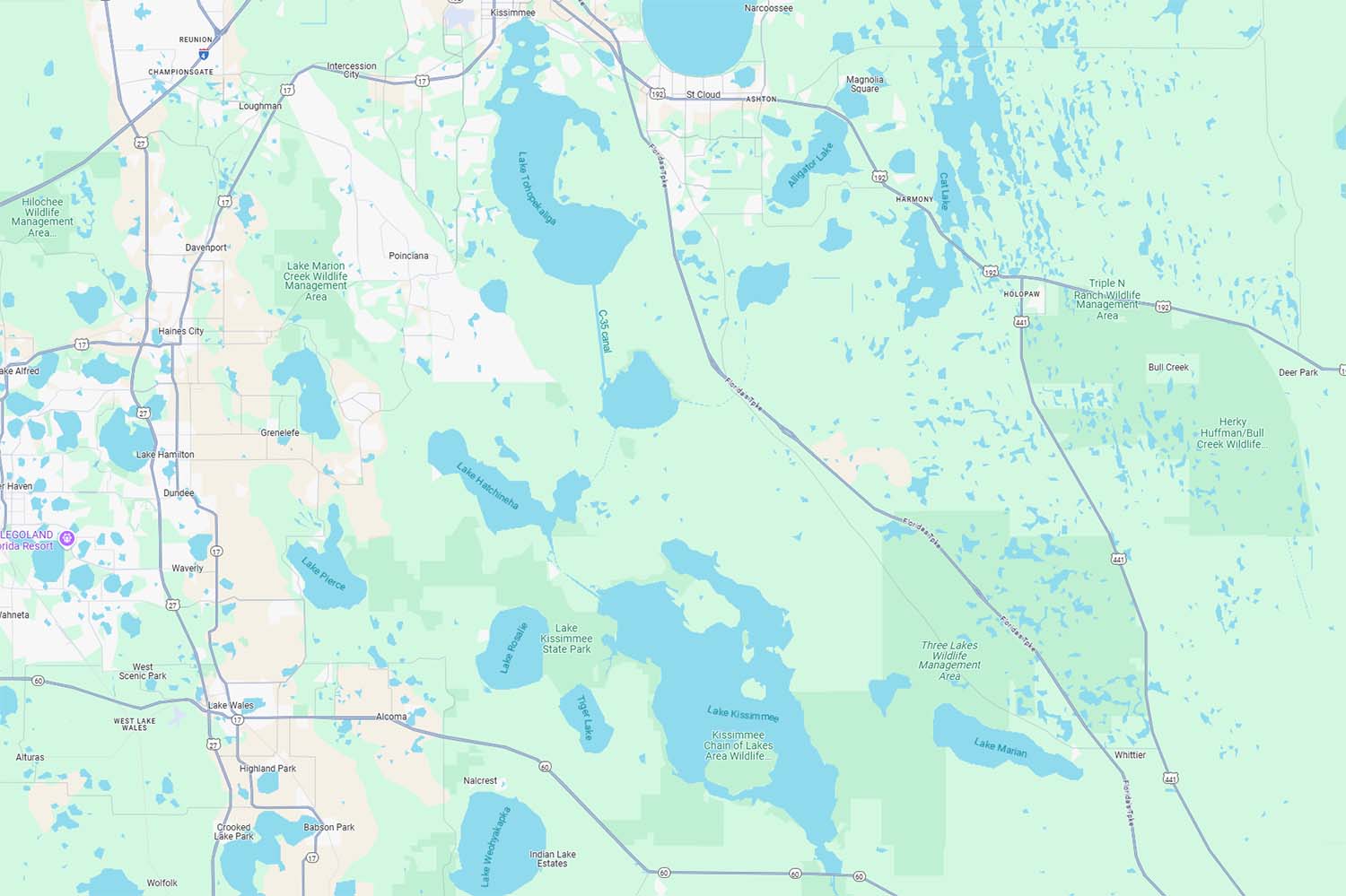
Panfish Bonanza: Shellcracker & Bluegill are Bedding
Don’t overlook the incredible panfish action right now! Bluegill and shellcracker (redear sunfish) are in full spawning mode, and you can find them concentrated in large groups, known as beds. Lake Hatchineha has been particularly productive for panfish anglers.
Look for them in shallow, sandy-bottomed areas, often adjacent to lily pads or cattails. You can often spot the light-colored, circular beds on the bottom with polarized sunglasses. The best bait, by far, has been live crickets or red worms. Rig them on a simple slip-bobber rig so you can adjust your depth to keep the bait just off the bottom. It’s a fantastic way to ensure a full cooler and a fun day for the whole family.
[INTERNAL LINK: A relevant article on FLBassInsider.com about how to find and catch bedding bluegill]
Forecast and Final Thoughts
The upcoming forecast of partly cloudy skies and a chance of afternoon showers is perfect for maintaining these fishing patterns. The cloud cover will extend the morning bite, and the showers can trigger a feeding frenzy. For more official information on the fishery, be sure to check the Florida Fish and Wildlife Conservation Commission (FWC) page for the Kissimmee Chain.
Overall, the fishing on the Kissimmee Chain is excellent. The high water has created a dynamic environment, and the bass and panfish are cooperating. Use this report to your advantage, stay hydrated, and enjoy the fantastic early summer fishing Central Florida has to offer.
